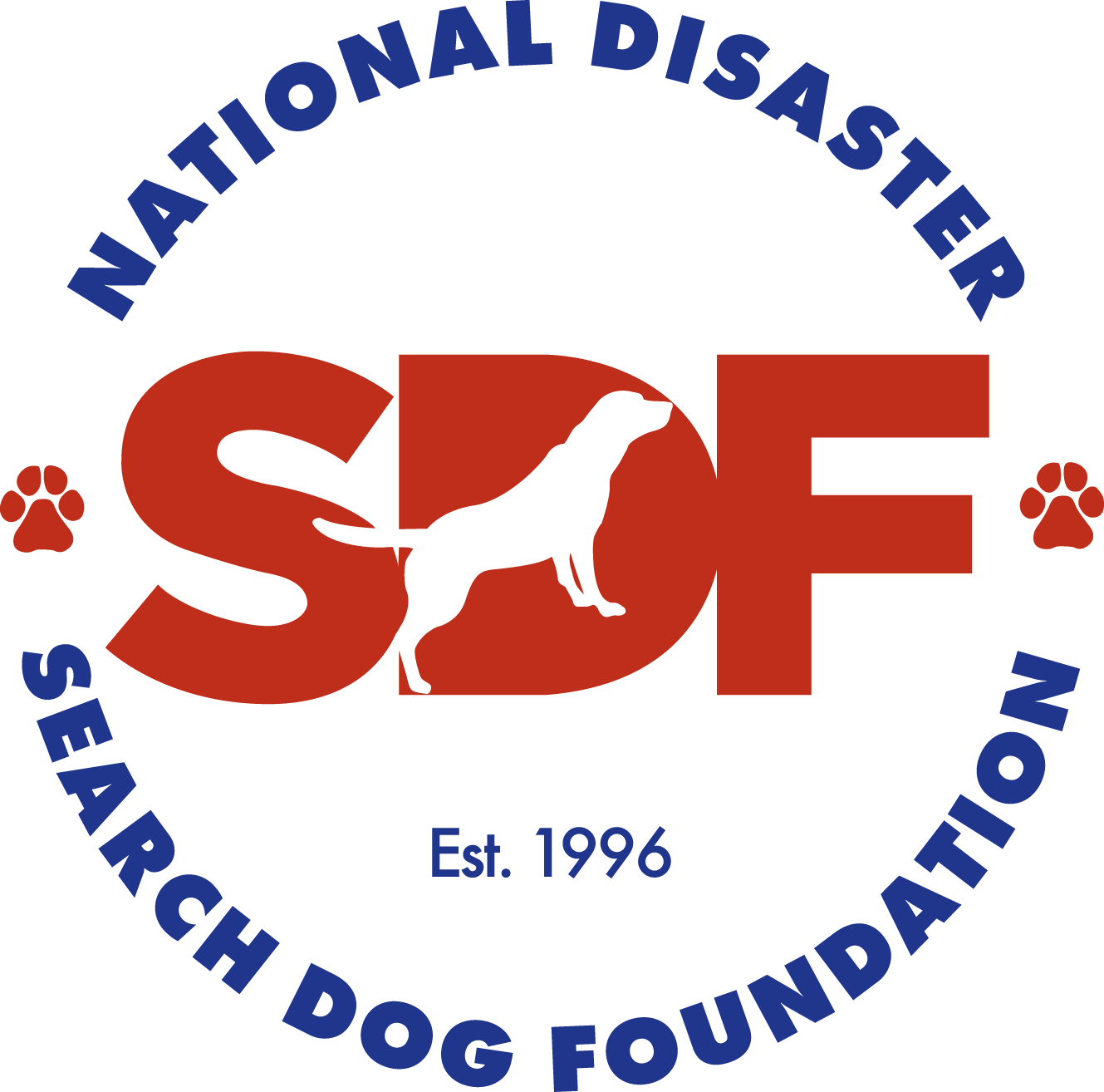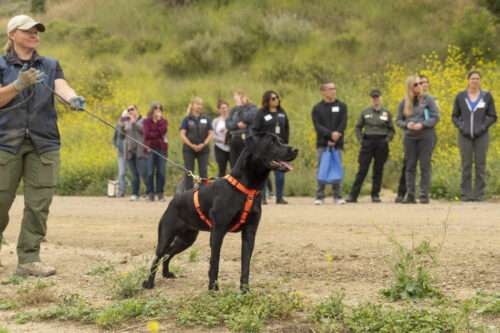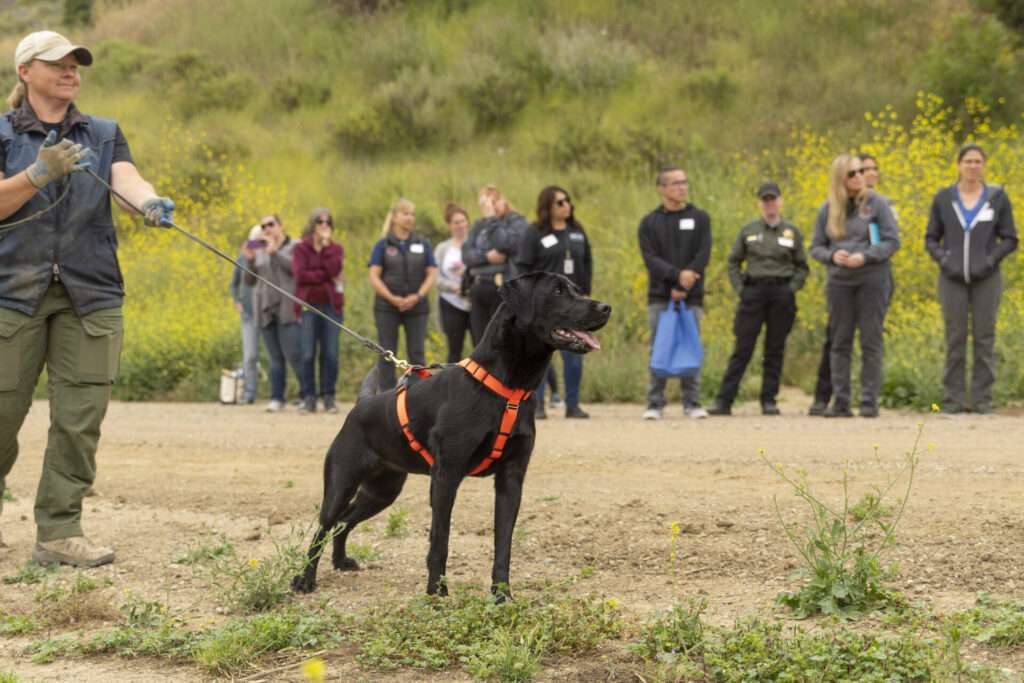
In recruiting canines for our search program, we’ve developed relationships with other organizations that employ working dogs in numerous fields, such as law enforcement, conservation, and wilderness and avalanche rescue, to name a few. Thanks to these contacts, we can find placements for candidates who don’t choose to pursue disaster search as a career and get reciprocal referrals of canines who might find search more fulfilling than their current field. With these partnerships in mind, we’ve expanded our recruitment model to include candidates for disaster search as well as for other working dog jobs, thus increasing the number of rescued dogs for whom we can secure a happy, fulfilling life.
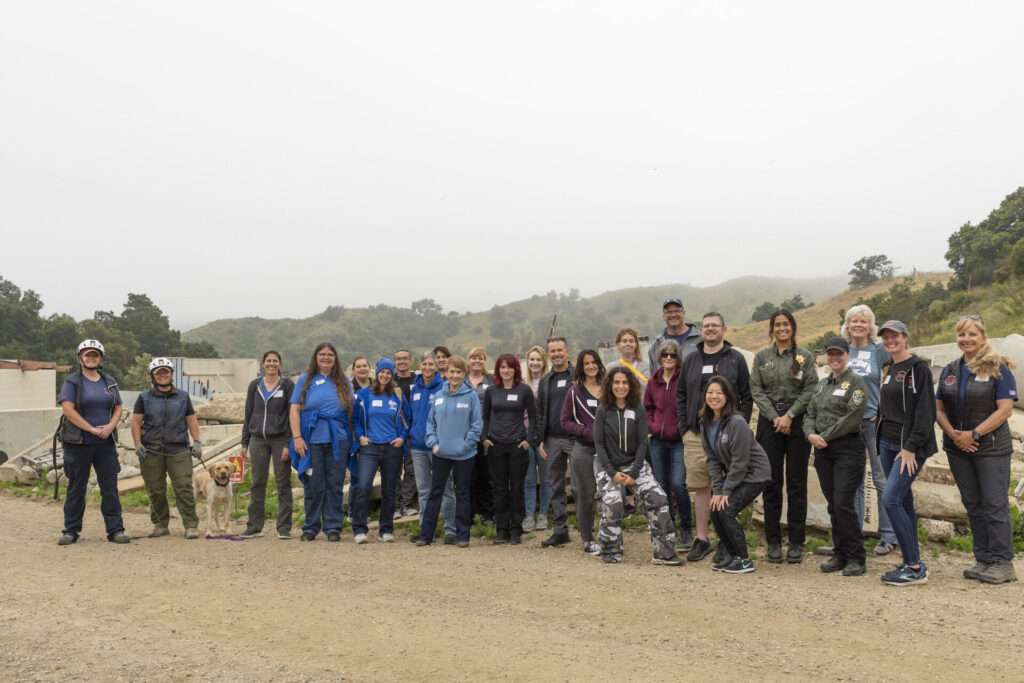 To support our mission to help potential working dog candidates from shelters and rescues find their ideal place, SDF’s Canine Recruitment Team hosted a core group of animal welfare partners last month for an in-person training event on evaluating working dogs. This exclusive event started with a tour of our campus where recruitment partners walked through Search City with its array of buildings and facades set up to simulate a town hit by disaster, an up-close look at barrel fields and rubble piles where search dogs train, and our well-appointed facilities where we care for our dogs including kennels, food prep kitchen, and vet clinic.
To support our mission to help potential working dog candidates from shelters and rescues find their ideal place, SDF’s Canine Recruitment Team hosted a core group of animal welfare partners last month for an in-person training event on evaluating working dogs. This exclusive event started with a tour of our campus where recruitment partners walked through Search City with its array of buildings and facades set up to simulate a town hit by disaster, an up-close look at barrel fields and rubble piles where search dogs train, and our well-appointed facilities where we care for our dogs including kennels, food prep kitchen, and vet clinic.
After the tour, our Canine Training Team gave our guests a search dog demonstration on the rubble pile. As each dog ran the pile searching for the hidden person representing a disaster survivor, a trainer explained how different conditions affected each search. Conditions such as wind direction and speed, air temperature, scent dispersal from the crowd, and even each dog’s unique method of searching affected the speed at which each dog found the hidden person. But make no mistake—each dog did find the person, in seconds to minutes, within thousands of tons of rubble, a feat impossible to accomplish that quickly in any other way.
After the rubble search demonstration, our guests made their way to a classroom where our Canine Recruitment Outreach Manager, Katie Brennan, gave a presentation outlining the characteristics we look for when recruiting shelter dogs for our search program or other jobs with our working dog career change partners. Among these characteristics: high energy, obsessive toy drive, tenacity, and boldness—traits that present poorly in a shelter environment but are highly desirable for a working dog.
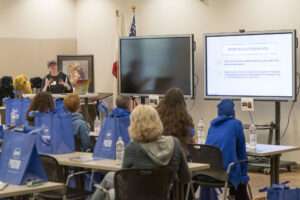 There were video demonstrations of each performance screening we require of potential search candidates included in the presentation, but guests also got to see live demonstrations of these screenings with our very own search dog candidates! Particularly impressive in this series of demonstrations was search candidate Raven’s Field Hunt test.
There were video demonstrations of each performance screening we require of potential search candidates included in the presentation, but guests also got to see live demonstrations of these screenings with our very own search dog candidates! Particularly impressive in this series of demonstrations was search candidate Raven’s Field Hunt test.
During this test, the handler holds the dog while a toy is thrown into tall grass or brush where the dog can’t see it. The dog is then prevented from going after the toy for a specific, timed series of delays. The first is an immediate release, the next is a 15-second delay, and the last is a one-minute delay. When time is up, the handler spins the dog around to prevent them from visually marking the spot where they saw the toy land, and then the dog is released to find the toy.
When Raven was released after the one-minute delay, she began searching the tall grass for the toy but didn’t immediately find it. Did she give up? Did she look to her handler for help? She did not! She tenaciously ran back and forth, nose to the ground, weaving within and around the perimeter of the search area. It took her several minutes of searching (while the tension mounted in anxious onlookers), but she found the toy at last. Determined little Raven was the perfect example of what we mean when we say we’re looking for dogs who are high drive, obsessive, tenacious, and bold. Raven would not give up and leave that toy behind; if she were searching a disaster site, she wouldn’t leave a survivor behind either.
Overall, this was a very successful day of networking with our partners, who came away with a good base of knowledge to draw on when encountering potential working dogs in their care. We know not every dog we recruit will enjoy disaster search, but thanks to the shared commitment of our shelter and rescue partners, we can identify more potential working dogs and find each of them the right job for a happy life.
